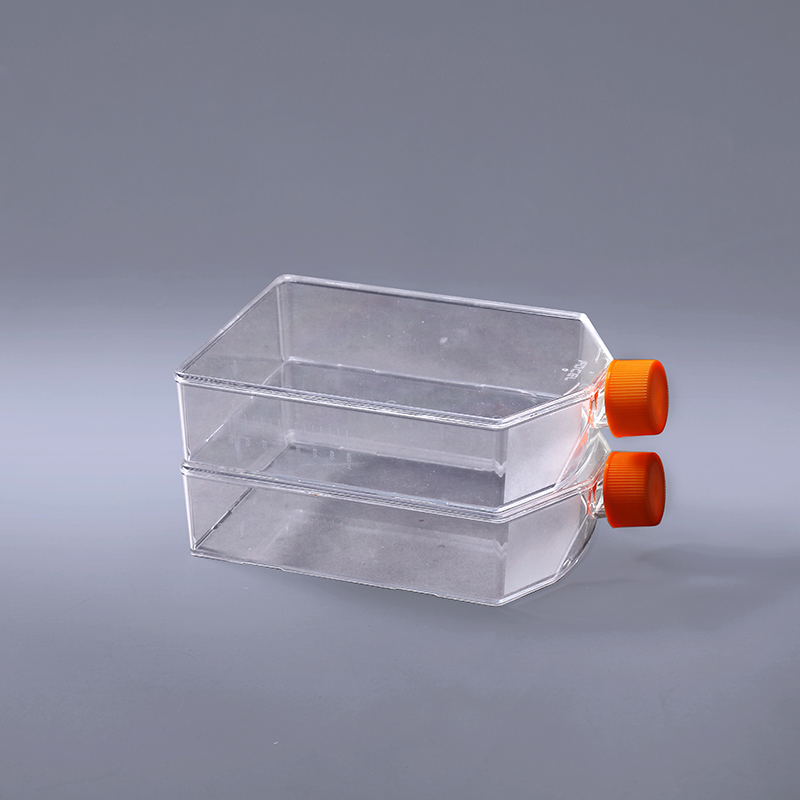изготовлен из медицинского полистирола с высокой прозрачностью. В соответствии с различными процессами обработки поверхности он делится на два типа: гидрофильный и гидрофобный. : используются для культивирования прикрепленных клеток. Рост таких клеток должен иметь опорную поверхность, к которой можно прикрепиться, и клетки могут расти и размножаться на этой поверхности, полагаясь на факторы прикрепления, секретируемые сами по себе или содержащиеся в культуральной среде. Поверхность бутылки подверглась специальной модификации для введения гидрофильных групп. Целью этого является повышение адгезионных характеристик поверхности бутылки, которая больше подходит для роста клеток. колбы для клеточных культур
Выше приведены два типа колб для культивирования клеток, культуры клеток и тканей в лаборатории. Конструкция с широким узким местом облегчает контакт пипетки и скребка с поверхностью роста.Гидрофобные колбы для культивирования клеток
The above are two types of cell culture flasks, which are mainly suitable for medium-scale cell and tissue culture in the laboratory. The wide bottleneck design facilitates the pipette and cell scraper to contact the growth surface.
The FAI climbed 5.9 percent year-on-year in the first 11 months of 2018, quickening from the 5.7-percent growth in Jan-Oct, the National Bureau of Statistics (NBS) said Friday in an online statement.
The key indicator of investment, dubbed a major growth driver, hit the bottom in August and has since started to rebound steadily.
In the face of emerging economic challenges home and abroad, China has stepped up efforts to stabilize investment, in particular rolling out measures to motivate private investors and channel funds into infrastructure.
Friday's data showed private investment, accounting for more than 60 percent of the total FAI, expanded by a brisk 8.7 percent.
NBS spokesperson Mao Shengyong said funds into weak economic links registered rapid increases as investment in environmental protection and agriculture jumped 42 percent and 12.5 percent respectively, much faster than the average.
In breakdown, investment in high-tech and equipment manufacturing remained vigorous with 16.1-percent and 11.6-percent increases respectively in the first 11 months. Infrastructure investment gained 3.7 percent, staying flat. Investment in property development rose 9.7 percent, also unchanged.
 English
English



















































